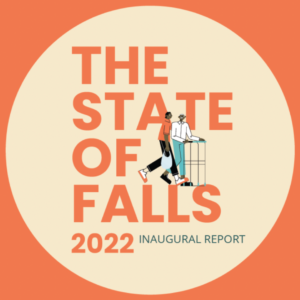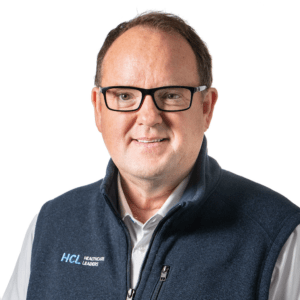eMAR and Mobile Computing: Why Nursing Homes Need to Get Wired Now
Patient safety is a top priority for all healthcare facilities, and nursing homes are no exception. Specifically, medication errors have become a growing concern for long-term care providers. Most nursing homes still depend on an antiquated system: paper-based charts and records, including the medication administration record (MAR), that are handwritten for each medication administration event for each resident. And yet the same type of technology—both software and hardware—that is experiencing success in acute care facilities can be just as beneficial, if not more so, in long-term care facilities, where residents need even more frequent med passes, treatments, and attention from nursing staff.
Imagine this familiar sight in the corridors of many long-term care facilities: A paper MAR the size of the New York City yellow pages sits atop a medication cart, as nurses transcribe individual dosage instructions from handwritten records—an inefficient process with no clearly defined workflow that places needless stress on nursing staff. Paper MARs are not inherently designed to reduce medication errors and they have remained unchanged for decades.
Illegible entries can result in medication administration mistakes: A nurse might misread a handwritten note left by a doctor or colleague. Instructions about discontinuing a medication or altering its dosage might not be accurately recorded. If a med pass is delayed when staff must meet an urgent resident need, the paper-based system makes it difficult to ensure that the process resumes seamlessly. The common practice of inserting a straw or bookmark into the MAR during an interrupted med pass certainly does not ensure that it is resumed accurately, nor does it provide peace of mind for staff.
With so many possibilities for error, administrators and directors of nursing cannot be confident that their MARs will pass the scrutiny of the state surveyor. Pharmacies and long-term care providers must reconcile their paper-based MARs at the end of the month to match the drugs that were added or changed since the print date. Incomplete entries or chart “holes” make it difficult to audit medication administration and provide effective quality control. At survey time, these holes can result in fines of roughly $2,500 per incident, according to industry estimates.
This lack of controls and tools to make the med pass process easier and more efficient contribute heavily to adverse drug events (ADEs) in long-term care. In fact, a study published in The American Journal of Medicine concluded that with 1.6 million long-term care residents in the United States, there are 1.9 million ADEs per year.1 More specifically, a 2006 study on the prevention of medication errors by the Institute of Medicine found that:
Excluding wrong-time errors, omission of an ordered medication is generally the most common type of drug administration error in nursing homes.
Preventable ADEs run at a rate of 50 per 100-bed nursing home.
The most common medication administration errors are administering an unauthorized drug (44.8%), omitting a prescribed drug (41.5%), administering the wrong dose (11%), administering via the wrong route (2%), and administering the wrong form (0.4%).
The Solution
Electronic medication administration record systems (eMARs) are workflow management systems that automate the inefficient and error-prone paper-based MAR process. This software is standard practice for many acute care settings and is starting to be embraced by more innovative long-term care communities. With eMAR solutions, nursing staff have an easy and efficient way to conduct daily med passes, ensuring that long-term care facilities meet the “five rights” of medication administration: right resident, right drug, right dose, right route of administration, and the right time.
When it comes to eMAR, no two definitions are the same and not all eMAR systems are created equal. As long-term care is in the nascent stages of adopting eMAR, what should administrators and decision makers look for when selecting an eMAR solution?
The most important consideration is that the eMAR solution must be easy to use and have a clear, crisp user interface. Nursing staff must be able to intuitively use the program, with floor nurse training taking no more than a few minutes before the user can effectively and properly navigate the system. If the system is too complicated to use, directors of nursing or nurse managers will have difficulty enforcing compliance and ensuring that the system is being used properly…or at all.
An often overlooked factor: eMAR solutions built for acute care environments do not deliver the same benefit as an eMAR specifically designed for long-term care. The best eMAR solutions are built around real long-term care workflows and provide a process guided by specifically designed software to complete a successful med pass.
On the back end, the eMAR must be cost-effective and robust, and all aspects must be considered. For example, does the solution require complicated databases to support, software to update, or servers to maintain? Does your vendor provide adequate training to ensure that staff are comfortable, not only with the eMAR application, but with mobile computing technology in general? It is critical that nursing staff have training not only for the applications they are to use, but for the hardware in general—the computer and any other related devices—in order for them to drive the application properly.
Mobile Computing: Information at the Bedside
Mobile computing workstations offer today’s nursing home staff another convenient and powerful way to provide accurate, more efficient resident care. Rather than rely on handwritten charts and medical records, which offer some of the same drawbacks as the paper MAR, nurses can use these easily maneuverable stations in the resident’s room, in the corridor, or at a nurses’ station. Mobile computing workstations allow nursing staff to access various types of clinical and medication administration documentation software—eMAR, electronic medical records (EMRs), and so on—no matter their location. A nurse might need to review the on-call physician’s latest order, or a physician or might need to check a resident’s record before prescribing a new drug to determine if there is any potential of an ADE, or if the resident is allergic. With mobile computing, not only is the information electronic and therefore easier to read, it is available in the resident’s room interactively, wirelessly, and in real time.
Even the best clinical data management application is ineffective if it is not easily accessible at the point of care. There are many mobile computing workstations on the market today, each offering different levels of feature customization and functionality, including medication storage, to complement an eMAR solution. Nursing homes should look for a mobile computing station that is lightweight, with a trim footprint so that it is easy for nursing staff to maneuver through corridors and patient rooms. It should also have an ample work area, secure storage area, and accessories that help nursing staff work as efficiently as possible, including scanner holders, cup holders, and mouse trays.
Nursing home administrators should also consider the mobile computing station’s technology specifics as well: Does it support multiple types of solutions, including laptops, all-in-one PCs, and thin-client solutions (i.e., workstations with minimal resources that connect to a centrally managed data center)? Will IT staff have easy access to internal cable routing and peripherals? Can the system accommodate a variety of laptop models? Also, power output and battery life should not be overlooked—stations that need frequent charging are more trouble than they are worth, so administrators should look for products with a dependable, efficient power system.
The Bottom Line
While there is no silver bullet to improve everything in healthcare, technology does exist now to help nursing homes improve patient safety, reduce medication errors, and increase workflow efficiency. A successful eMAR deployment alone can help facilities redirect or save approximately $41,000 in annual labor costs that are currently wasted using paper-based MARs. In addition, more than 1,500 nursing hours can be redirected to resident care each year. Simply put, innovations such as eMAR and mobile computing workstations can improve medication pass efficiency and overall resident safety.
Michael Russo is Chief Technology Officer—Software Products Group at Artromick, a leading developer of medication management and healthcare technology solutions for the long-term and acute care markets. He has more than 20 years of experience in software design, including leadership roles at NeighborCare Pharmacy and HealthObjects.
For further information, phone (800) 848-6462, ext. 3320, or visit https://www.artromick.com. To send your comments to the author and editors, e-mail russo0108@nursinghomesmagazine.com.
Reference
- Gurwitz J, Field T, Judge J, et al. The incidence of adverse drug events in two large academic long-term care facilities The American Journal of Medicine 2005; 118 (3): 251-8
I Advance Senior Care is the industry-leading source for practical, in-depth, business-building, and resident care information for owners, executives, administrators, and directors of nursing at assisted living communities, skilled nursing facilities, post-acute facilities, and continuing care retirement communities. The I Advance Senior Care editorial team and industry experts provide market analysis, strategic direction, policy commentary, clinical best-practices, business management, and technology breakthroughs.
I Advance Senior Care is part of the Institute for the Advancement of Senior Care and published by Plain-English Health Care.
Related Articles
Topics: Articles , Technology & IT











